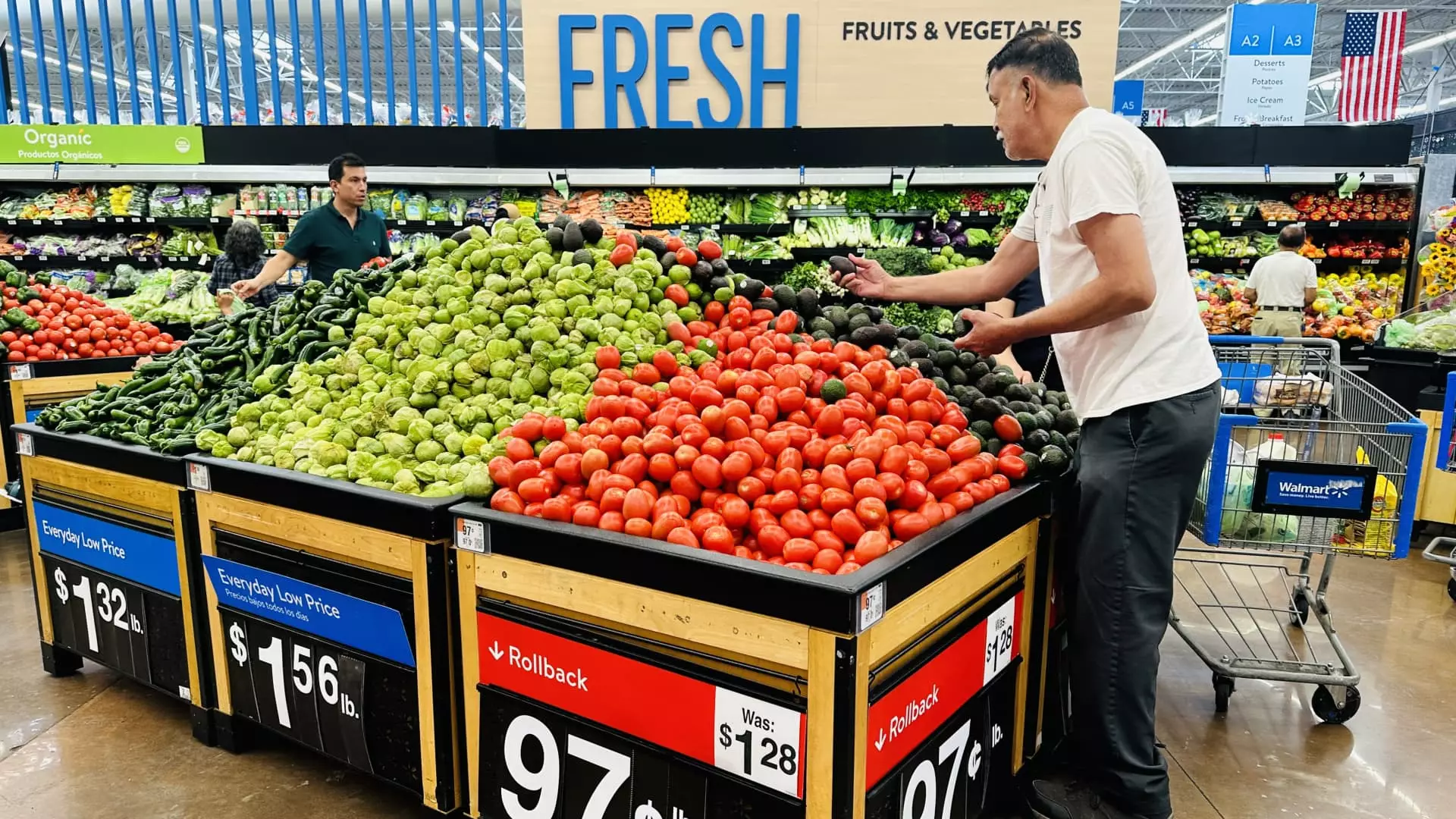The financial landscape in America is undergoing a seismic shift, where traditional spending norms are being replaced by novel mechanisms such as ‘Buy Now, Pay Later’ (BNPL) loans. Recent data from Lending Tree paints a sobering picture of the nation’s economic health. Nearly half of American consumers have turned to BNPL services for purchases, with a significant number using these loans for necessities like groceries. This reality extends beyond mere convenience; it’s indicative of a broader economic malaise that many would rather overlook. The alarming rise in grocery purchases through BNPL—from just 14% in 2024 to a staggering 25% this year—signals a desperate shift in consumer behavior.
Inflation: The Silent Criminal
The core issue plaguing consumers appears to be inflation, which has not only eroded purchasing power but also injected a sense of desperation into everyday spending. With high interest rates and unpredictability regarding tariffs and economic policies, people’s financial stability is more fragile than ever. This bleak outlook has compelled consumers to seek alternatives to conventional credit systems. According to Matt Schulz, the chief consumer finance analyst at Lending Tree, a significant portion of consumers is simply trying to stretch their budgets to cope with mounting costs. It raises an unsettling question: are we witnessing a transformation of consumer culture into one that relies on debt for essentials?
The average American might think that leveraging BNPL services is a harmless means of making ends meet. Unfortunately, it’s revealing a more troubling undercurrent. In a survey of 2,000 U.S. adults conducted in April, 41% acknowledged making a late payment on a BNPL loan in the past year. If these numbers don’t sound the alarm, consider this—this statistic has risen from 34% the previous year, indicating that more individuals are slipping into the precarious territory of financial mismanagement. The convenience that BNPL offers can easily morph into a cycle of debt when precautions are not exercised.
The Risks of Mismanagement
The triple threat of multiple loans, late payments, and accompanying fees is laying the groundwork for an impending financial crisis among consumers. Surprisingly, 60% of BNPL users report that they are juggling several loans simultaneously, with nearly one in four carrying three or more at once. Schulz emphasizes the risks tied to this trend, warning consumers to tread lightly while utilizing BNPL as a financial tool. The irony here is palpable; while intended to ease the financial burden, BNPL can easily spiral into chaos if not managed with caution.
What compounds this existential crisis is the evidence of irresponsible consumerism amplified through events like the Coachella music festival. Reports show that around 60% of attendees financed their expensive concert tickets through BNPL loans. This raises uncomfortable questions about priorities and the economic pressures consumers face to maintain a semblance of a normal lifestyle amidst rising costs. The revelation that even something as trivial as a concert ticket is being financed through debt underscores the fundamental problem: are we prioritizing lifestyle over financial health?
Societal Implications and Cultural Reflection
Moreover, DoorDash’s recent decision to accept BNPL financing for food deliveries has ignited a frenzy of ridicule and concern. The thought of financing fast food further illustrates the dire financial situation many Americans find themselves in. It’s a darkly comedic reflection of a society that increasingly resorts to financing even the most mundane aspects of life. Mockery aside, the trend sheds light on an alarming reality; survival tactics in today’s economy are becoming increasingly absurd, revealing a society caught in the grips of consumer debt.
The implications of these trends extend well beyond individual financial struggles. They signal deeper systemic issues that require urgent attention. As personal finance becomes synonymous with loans for basic needs, it becomes clear that American households are approaching a tipping point. The pressing question looms—where do we go from here? When do we acknowledge that financing essentials is not a sign of economic resilience, but rather a symptom of a failing economic system?
In the face of these staggering statistics, it’s crucial to recognize the difference between consumer choice and financial necessity. We must scrutinize the societal norms that push us toward unsustainable debt and reflect on what it truly means to live within our means. These insights demand a serious conversation about the future of consumer culture and economic policy in America.

